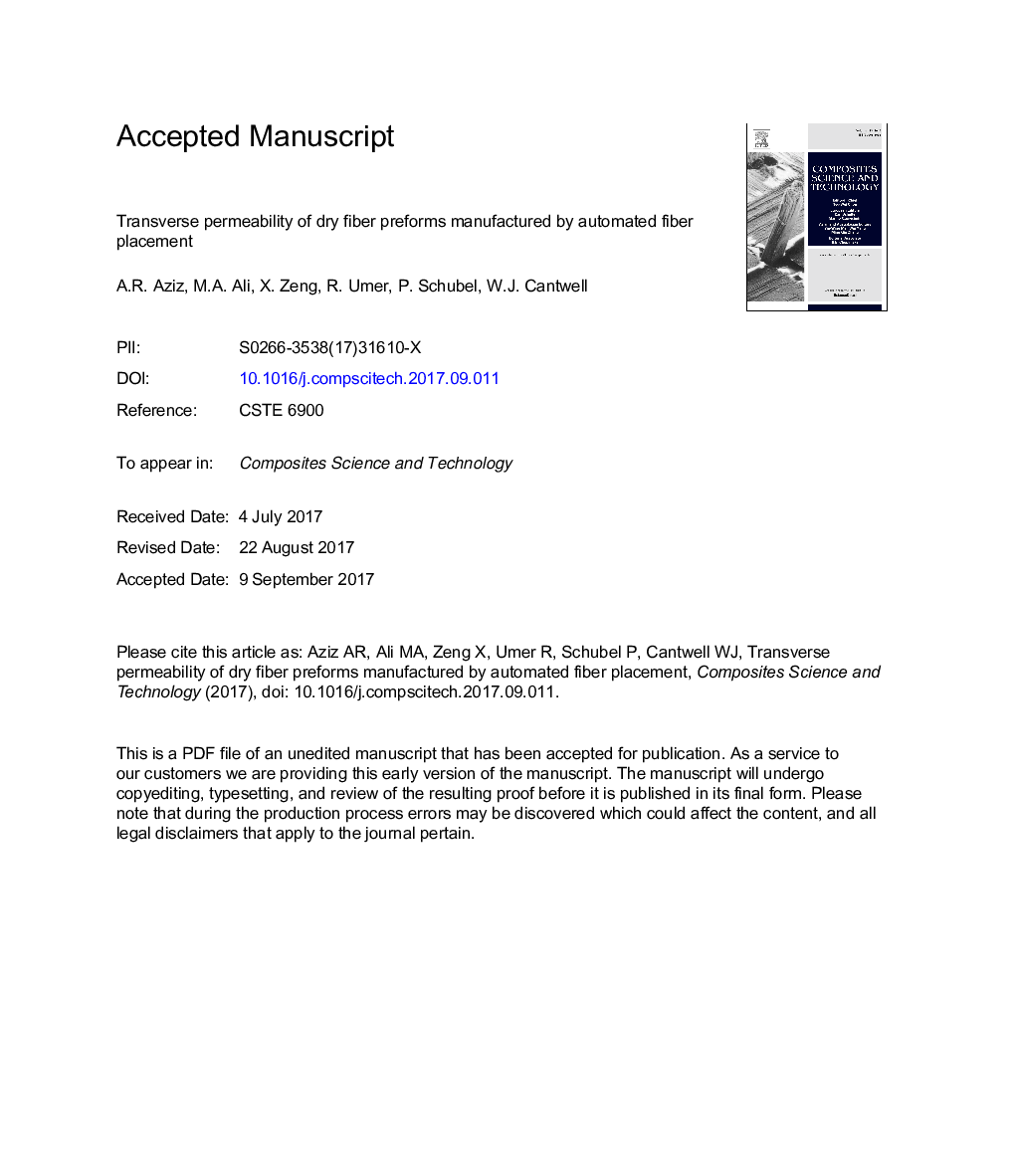| Article ID | Journal | Published Year | Pages | File Type |
|---|---|---|---|---|
| 5021977 | Composites Science and Technology | 2017 | 26 Pages |
Abstract
This work presents a correlation between the transverse permeability of a preform and the process variability of the automated dry fiber placement manufacturing technique. In this study, an experimental and numerical analysis of the dry tape preform, with a focus on its through-thickness permeability, has been undertaken. Geometric models, containing flow channels of two different width dry tape carbon preforms, have been created in the TexGen modeller. A Computational Fluid Dynamics (CFD) simulation has been undertaken to obtain the predicted through-thickness permeability of the dry tape preform. A parametric study on the effect of different dry tape gap sizes on the permeability of the preform is presented. An in-situ compaction study, carried out in an X-CT machine, revealed that the gap sizes were irregular throughout the manufactured preforms. In addition, an experimental investigation of the through-thickness permeability, which is based on a saturated flow condition at a thickness corresponding to full vacuum pressure, is also presented. The permeability prediction based on the X-CT re-constructed geometric model has been validated using the experimental data. A further parametric study has revealed that the process variablity in automated dry fibre placement influences the through-thickness permeability by a factor of upto 5.
Related Topics
Physical Sciences and Engineering
Engineering
Engineering (General)
Authors
A.R. Aziz, M.A. Ali, X. Zeng, R. Umer, P. Schubel, W.J. Cantwell,
